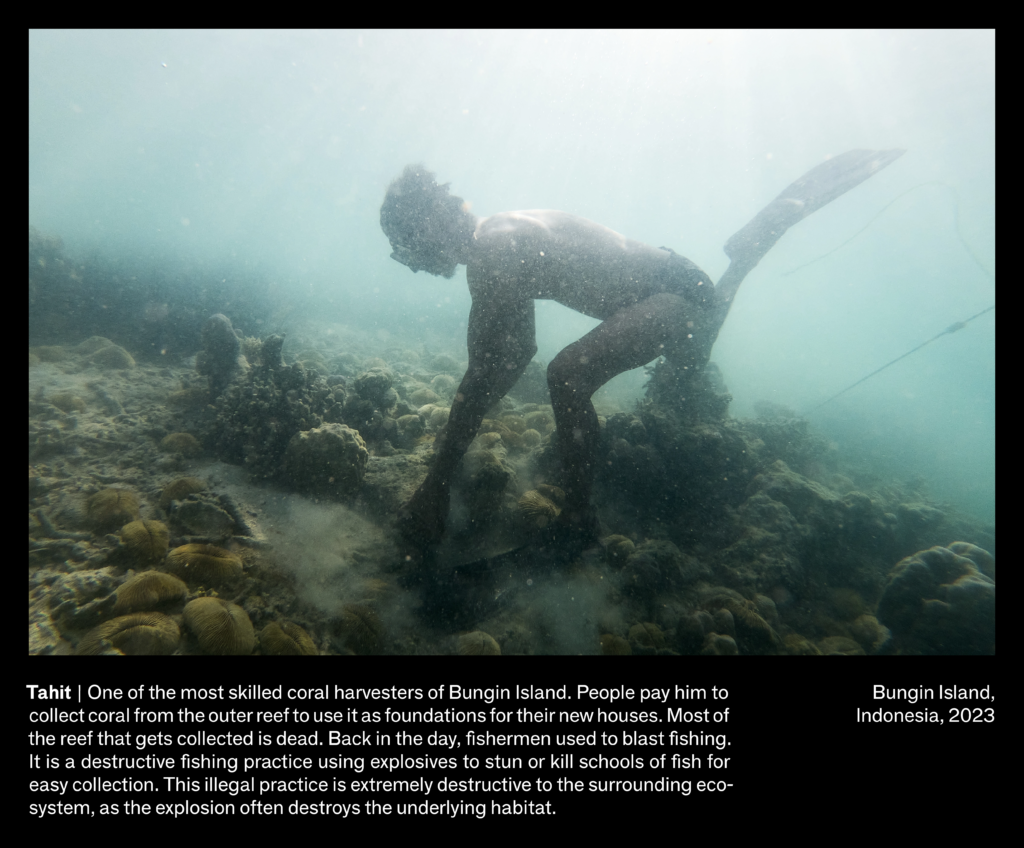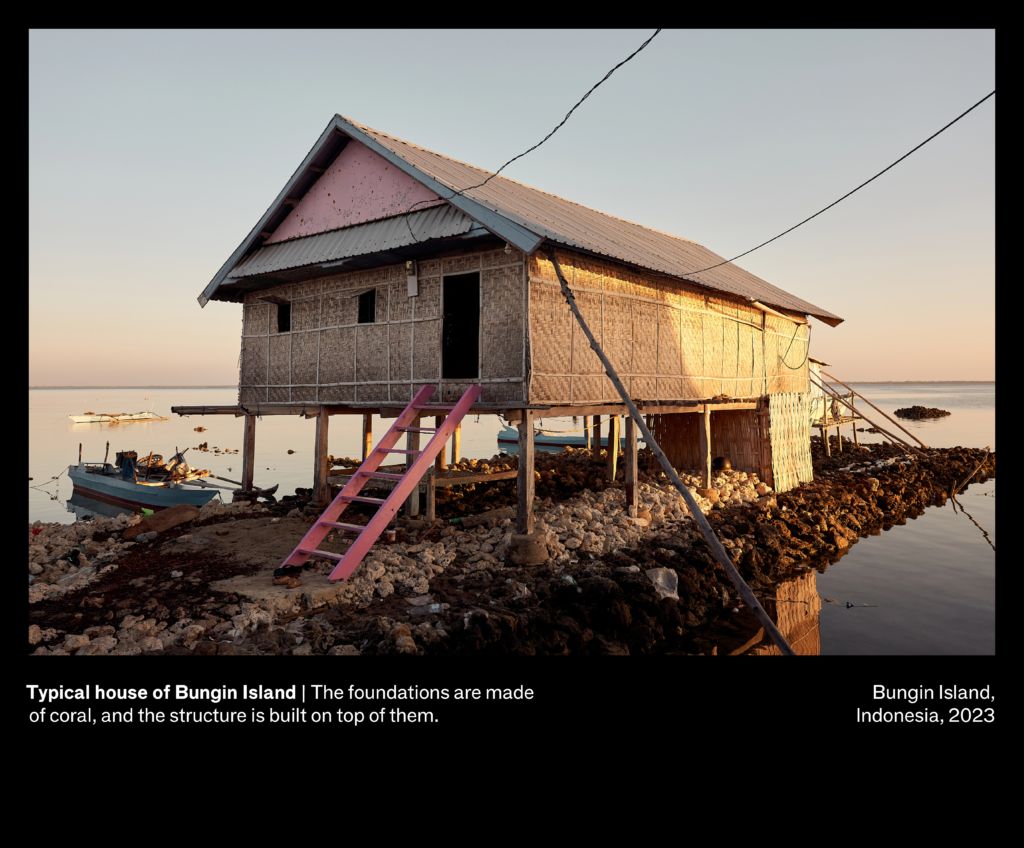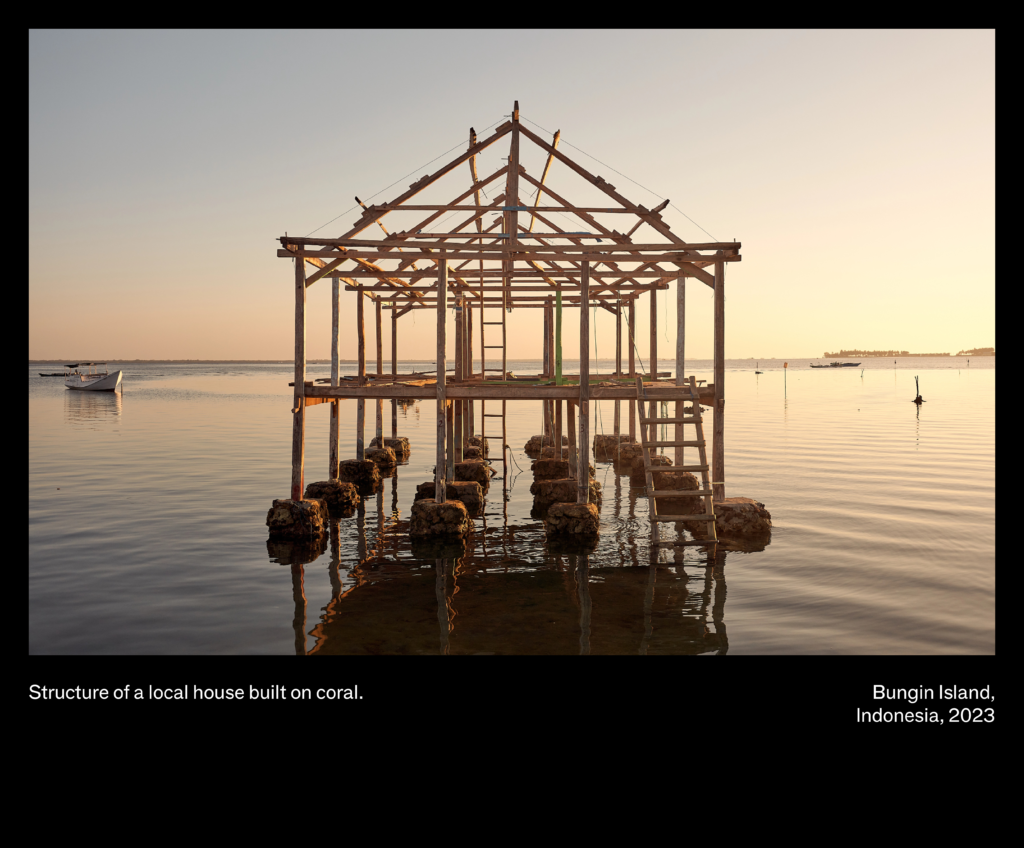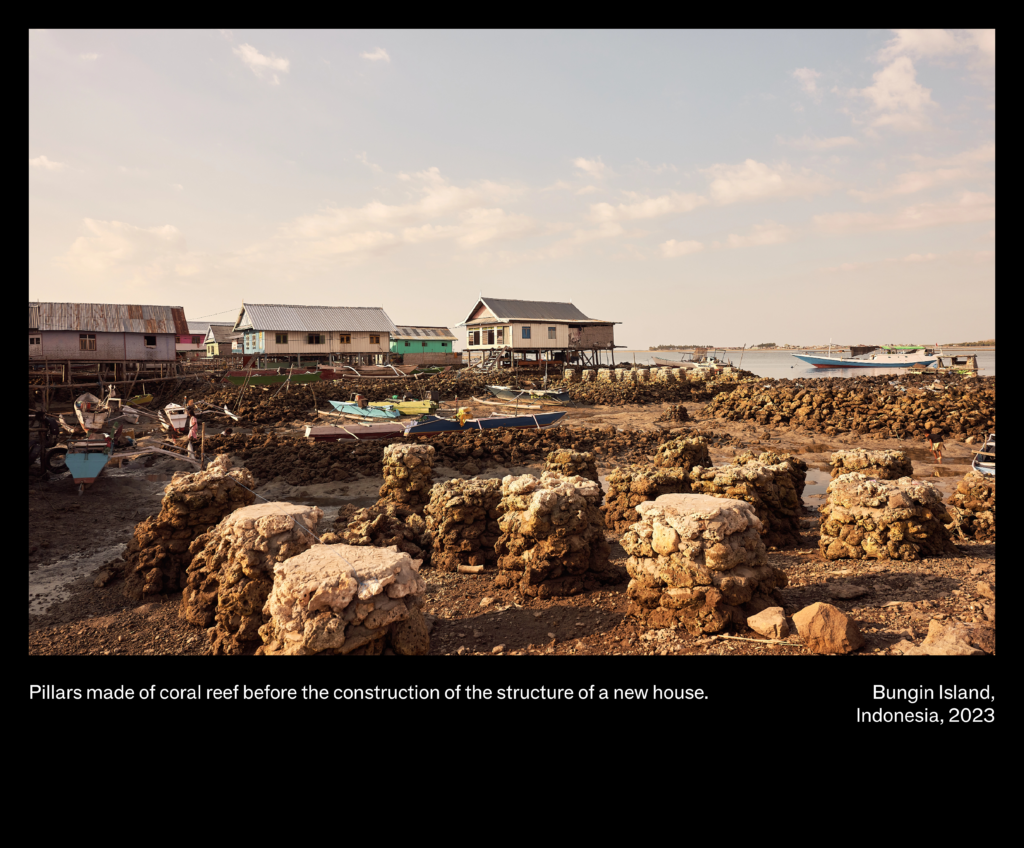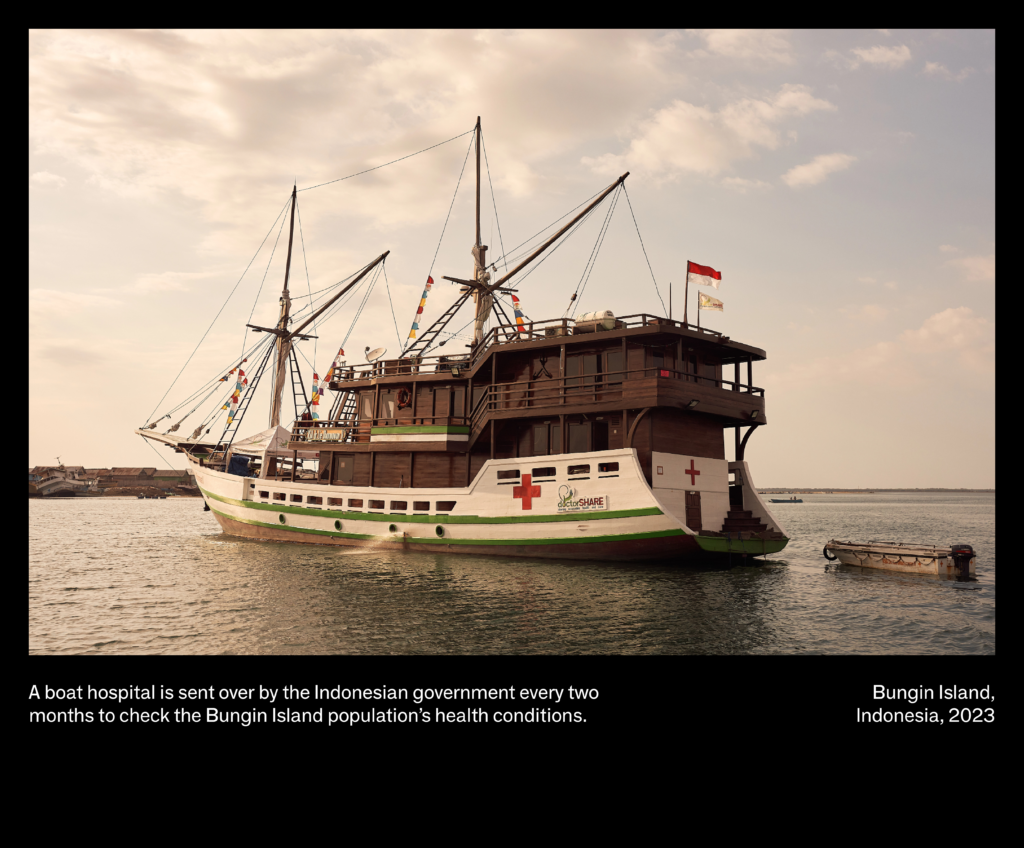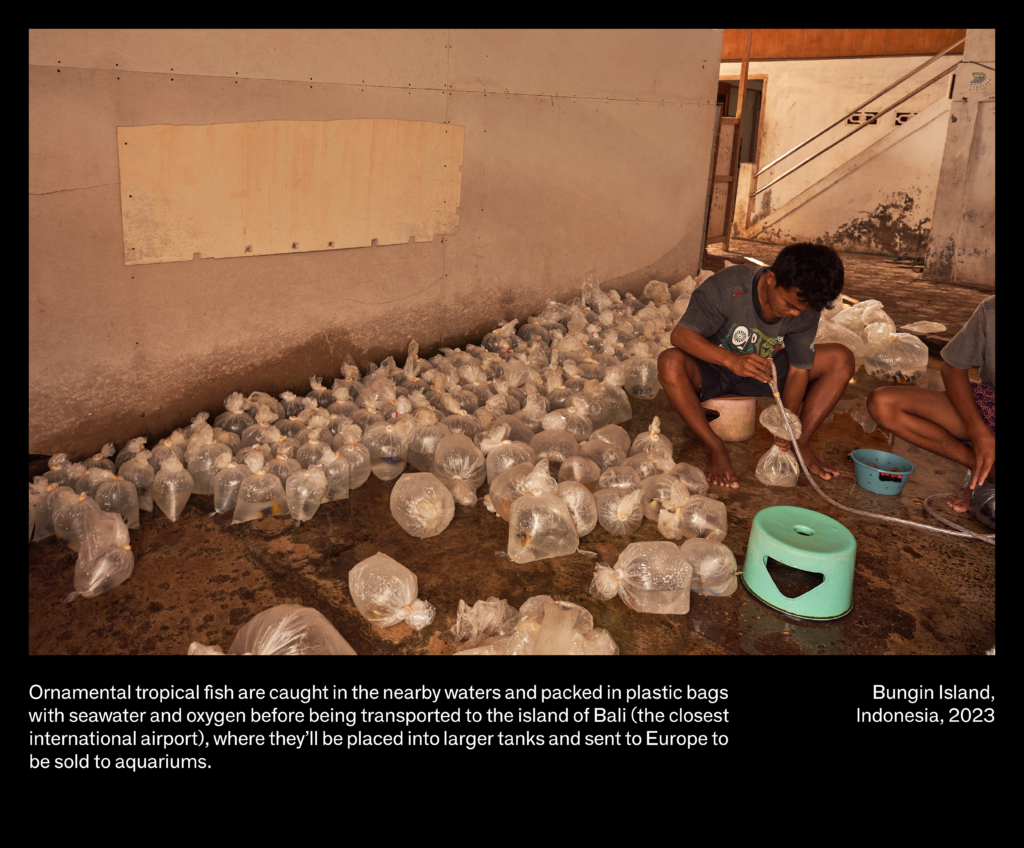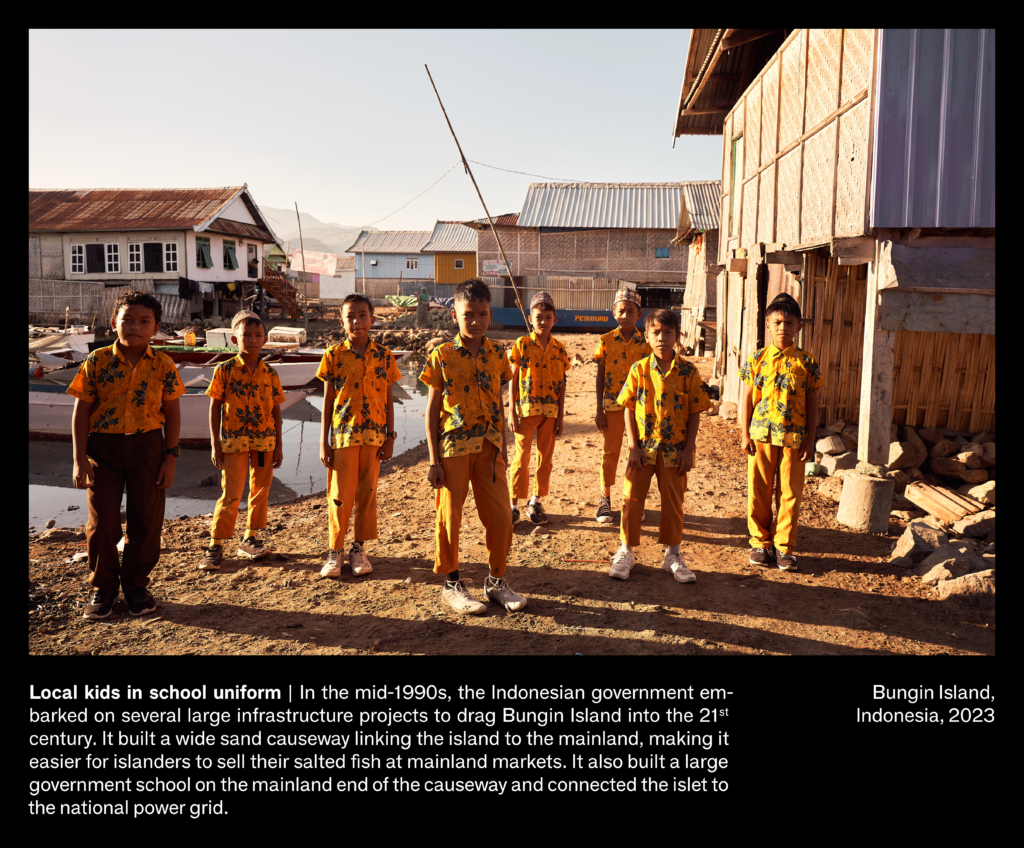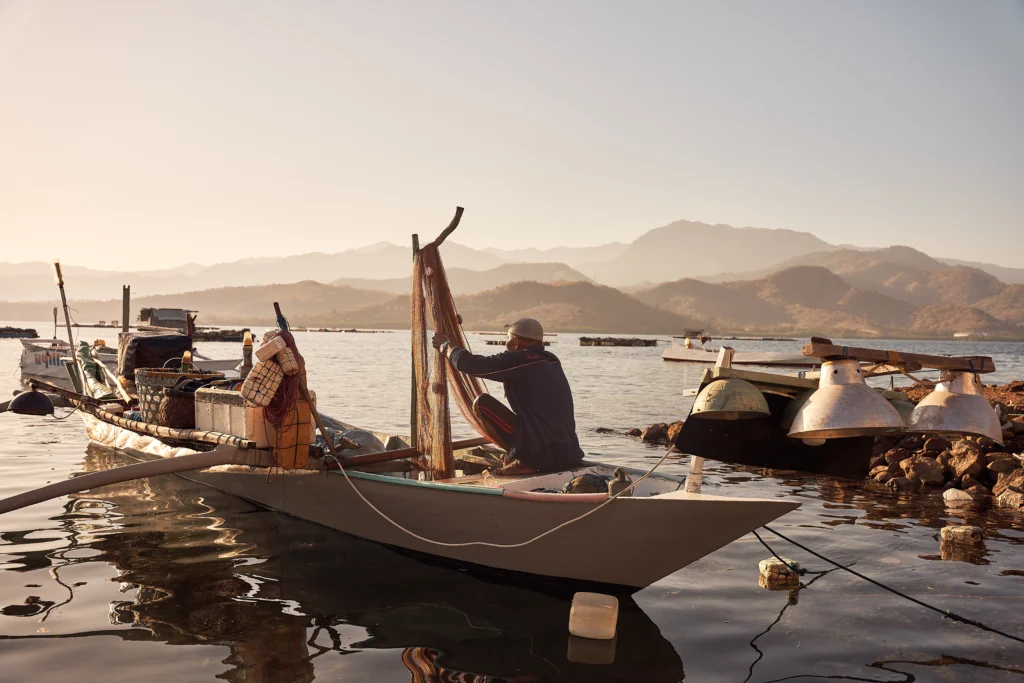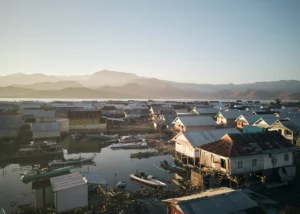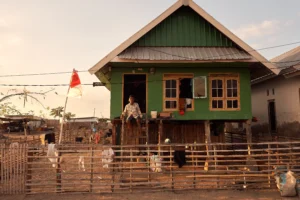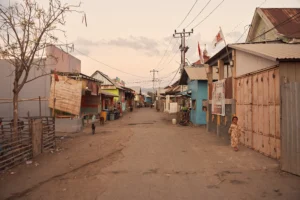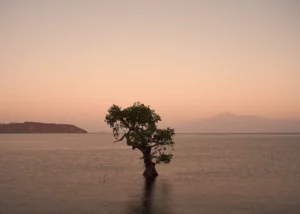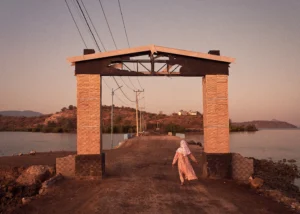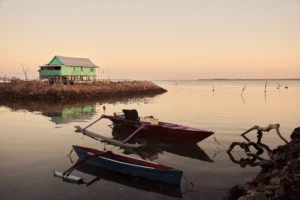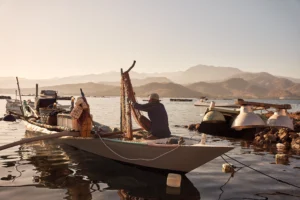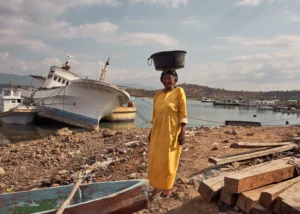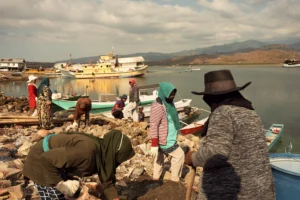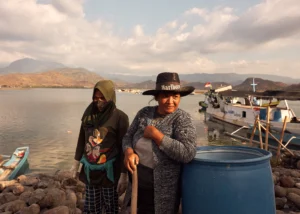On Bungin Island, Indonesia, the Bajau people confront rising seas and warming waters.
The Bajau people are a Southeast Asian ethnic community known for their incredible diving skills and strong connection to the sea. Traditionally, they live on boats or stilted villages along the coast, relying on fishing for their livelihood. Surrounded by the Bali Sea, Bajau culture is deeply tied to the ocean with people adapting to life on the water for generations.
Two centuries ago, a group of Bajau people arrived in Sumbawa, Indonesia, coming from the southern Philippines and Vietnam. At that time, Bungin Island – the term bungin meaning a mound of white sand – was just a sandbank located along the northern coast. The community proceeded to build very simple houses on this sandy land. As the population increased, the Bajau expanded the island onto the reefs by gathering coral to create foundations for houses on the lower parts of the nearby coral reef.
As skilled fishermen and free-divers, some members of the community can hold their breath and remain underwater for as long as eight minutes. Some children even have their eardrums pierced to prevent them from bursting due to water pressure while diving.
With 3,500 residents on just 8.5 hectares (21 acres) of land, Bungin Island also stands out as the most densely populated of Indonesia’s 17,000 islands and one of the most densely populated islands of the world. This culture and community persist amidst the backdrop of exacerbating climate impacts.
The Bajau people could soon be in serious danger as they confront two critical climate-related challenges: rising sea levels and warming waters. Rising sea levels pose a direct threat to their coastal homes, leading to erosion and flooding. Additionally, warming waters in the Coral Triangle contribute to coral bleaching, endangering marine life and the Bajau’s livelihood, as they heavily rely on coral reefs and marine resources for their sustenance. These environmental shifts pose immediate risks to their way of life.
